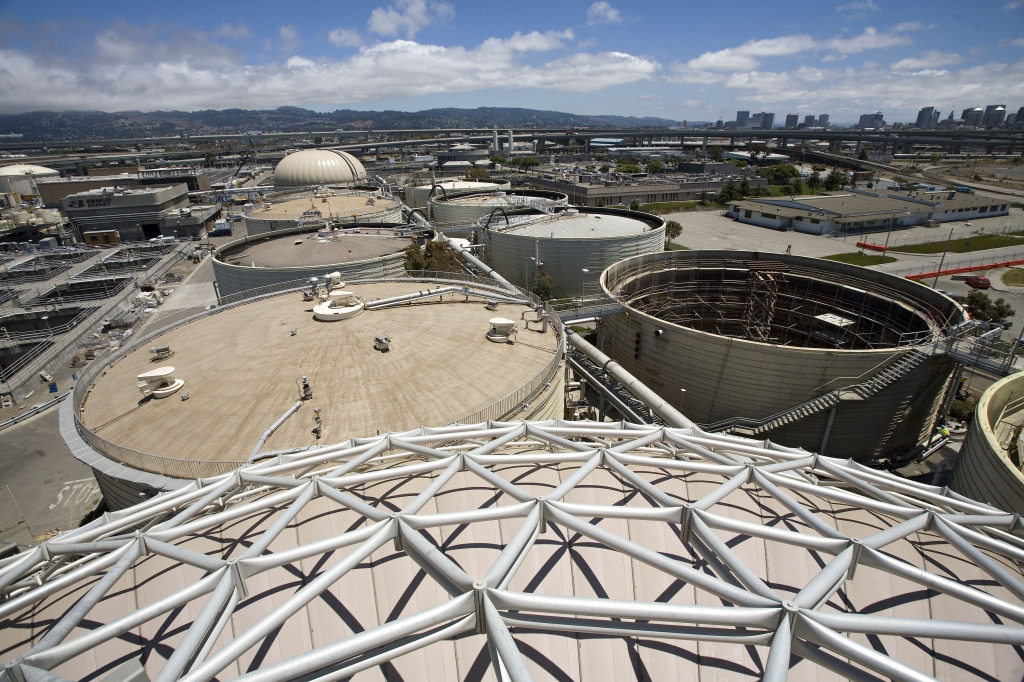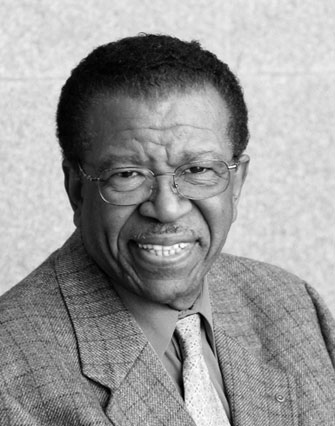Plan to Divert Garbage from Landfill to Produce Green Energy Awaits Waste Management OK
Oct 10, 2014
Posted in Business, Climate change, Economic Development, Environment, Health, Oakland Talks Trash

EBMUD green digesters at Oakland Army Base in West Oakland
By Ken Epstein
Oakland’s renegotiated trash deal may mean better rates and services for the city’s residents. But the agreement does not settle whether Oakland’s food waste will end up in a landfill or be diverted to East Bay Municipal District’s green digester that turns the garbage into electricity energy.
Under the now defunct plan the city had with California Waste Solutions (CWS), green waste from commercial establishments, such as restaurants, hospitals and cafeterias, would go to the EBMUD plant at the Oakland Army Base. CWS and EBMUD had a signed memorandum of understanding.
However, the terms of the city’s contract with Waste Management only require the company to negotiate with EBMUD.
“We are at a much earlier stage with Waste Management (than CWS),” said Abby Figueroa, EBMUD spokesperson. If the parties reach a deal, “We would end up being a subcontractor with Waste Management,” she said.
“This contract (would) enable us to put more resources into the plant, turning discarded food scraps and other digestible organic materials into renewable energy,” said William “Bill” Patterson, member of the EBMUD Board of Directors, speaking at a recent City Council meeting.
The idea behind EBMUD’s green digester is quite simple and utilizes technology that has been around for years. Carbon-rich food waste is blended and dumped into one of EBMUD’s 12 tanks to be decomposed by bacteria.

William “Bill” Patterson
“The (2-million gallon) tanks are kept at about 100 degrees for 2-3 weeks (where the) bacteria chomp away and release byproducts, most of which is methane gas,” said Fugueroa.
The gas is captured and fed into EBMUD turbines or engines to create electricity. Most of what goes into the digesters at present are solids from wastewater, she said.
The digesters were built in the 1980s when the East Bay was still a center of the food processing industry. Most of that capacity is unused at present.
In 2001, EBMUD started collecting food waste to utilize its excess capacity in the digesters. This includes wastes from wineries, dairies, food processors, grease from restaurants and commercial food scraps, said Figueroa.
On average, every day about 10 tons of food waste is delivered to the plant.
In 2012, EBMUD became the first wastewater utility in the country to produce enough energy from biodegradable waste to power its plant and sell extra energy back to the grid, said Figueroa.
This cuts fossil fuel use, greenhouse gas emissions and saves about $3 million each year in electricity bills, she said. Last year, EBMUD produced 6 megawatts of power. Currently, the excess power that is generated is sold to the Port of Oakland.
If EBMUD contracts with Waste Management to take Oakland’s commercial food waste, the utility estimates it will receive 70-100 tons of food waste per day.
“We estimate this will produce 1 megawatt of power, or enough to power 1,200 homes,” she said. “ The alternative is to send all this food waste to landfills, where methane will be produced naturally but not captured for energy production.”
Figueroa said that EBMUD responds immediately to concerns of West Oakland community members about odors that intermittently come from the utility’s plant,
She emphasized that the utility takes these concerns seriously and has spent millions of dollars for the latest technology and uses chemicals to reduce odors. In addition, she said, the odors that cause the concerns come mostly from the wastewater treatment plant, not the digesters.
“We’ll continue our commitment of being a good neighbor in the West Oakland community. We are using the state-of-the-art odor control technology,” said Patterson, EBMUD board member.
EBMUD daily treats about 63 million gallons of wastewater from nine East Bay cities, including Alameda, Albany, Berkeley, El Cerrito, Emeryville, Kensington, Oakland, Piedmont and part of Richmond.
The utility has been treating the East Bay’s wastewater since 1951.